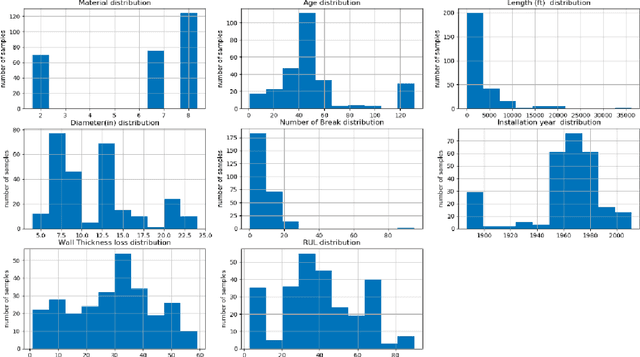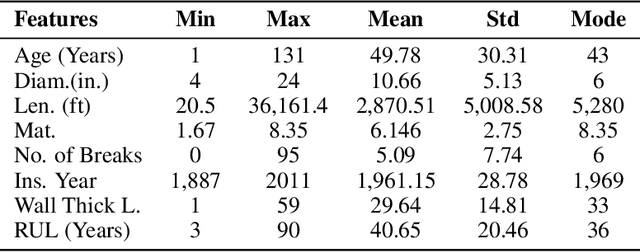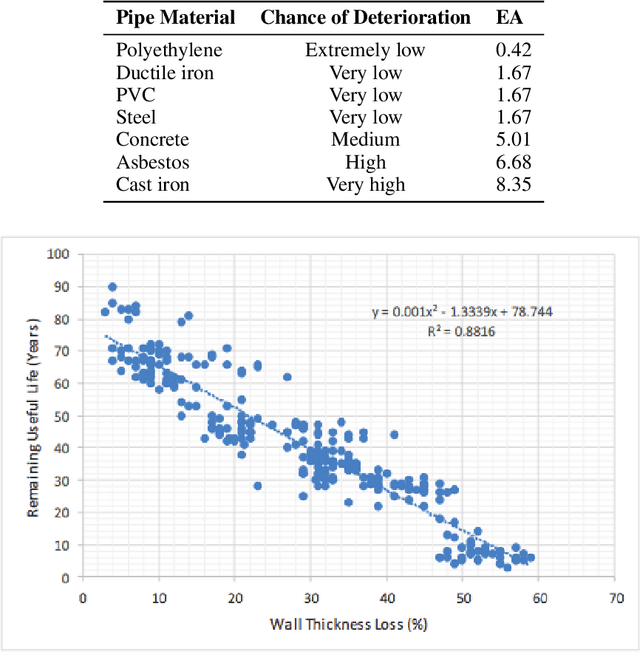Artificial Neural Networks and Adaptive Neuro-fuzzy Models for Prediction of Remaining Useful Life
Paper and Code
Aug 28, 2019



The U.S. water distribution system contains thousands of miles of pipes constructed from different materials, and of various sizes, and age. These pipes suffer from physical, environmental, structural and operational stresses, causing deterioration which eventually leads to their failure. Pipe deterioration results in increased break rates, reduced hydraulic capacity, and detrimental impacts on water quality. Therefore, it is crucial to use accurate models to forecast deterioration rates along with estimating the remaining useful life of the pipes to implement essential interference plans in order to prevent catastrophic failures. This paper discusses a computational model that forecasts the RUL of water pipes by applying Artificial Neural Networks (ANNs) as well as Adaptive Neural Fuzzy Inference System (ANFIS). These models are trained and tested acquired field data to identify the significant parameters that impact the prediction of RUL. It is concluded that, on average, with approximately 10\% of wall thickness loss in existing cast iron, ductile iron, asbestos-cement, and steel water pipes, the reduction of the remaining useful life is approximately 50%
 Add to Chrome
Add to Chrome Add to Firefox
Add to Firefox Add to Edge
Add to Edge